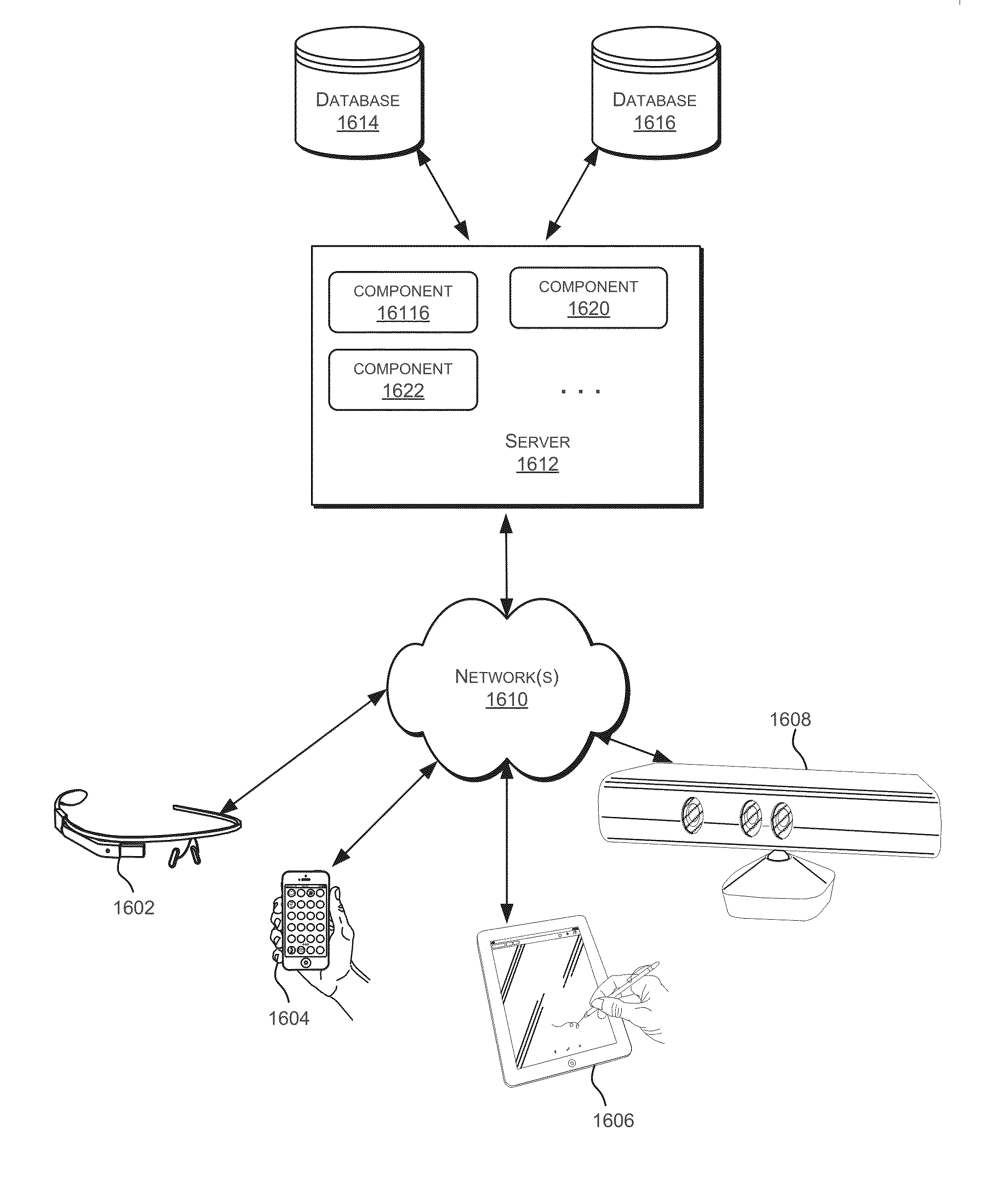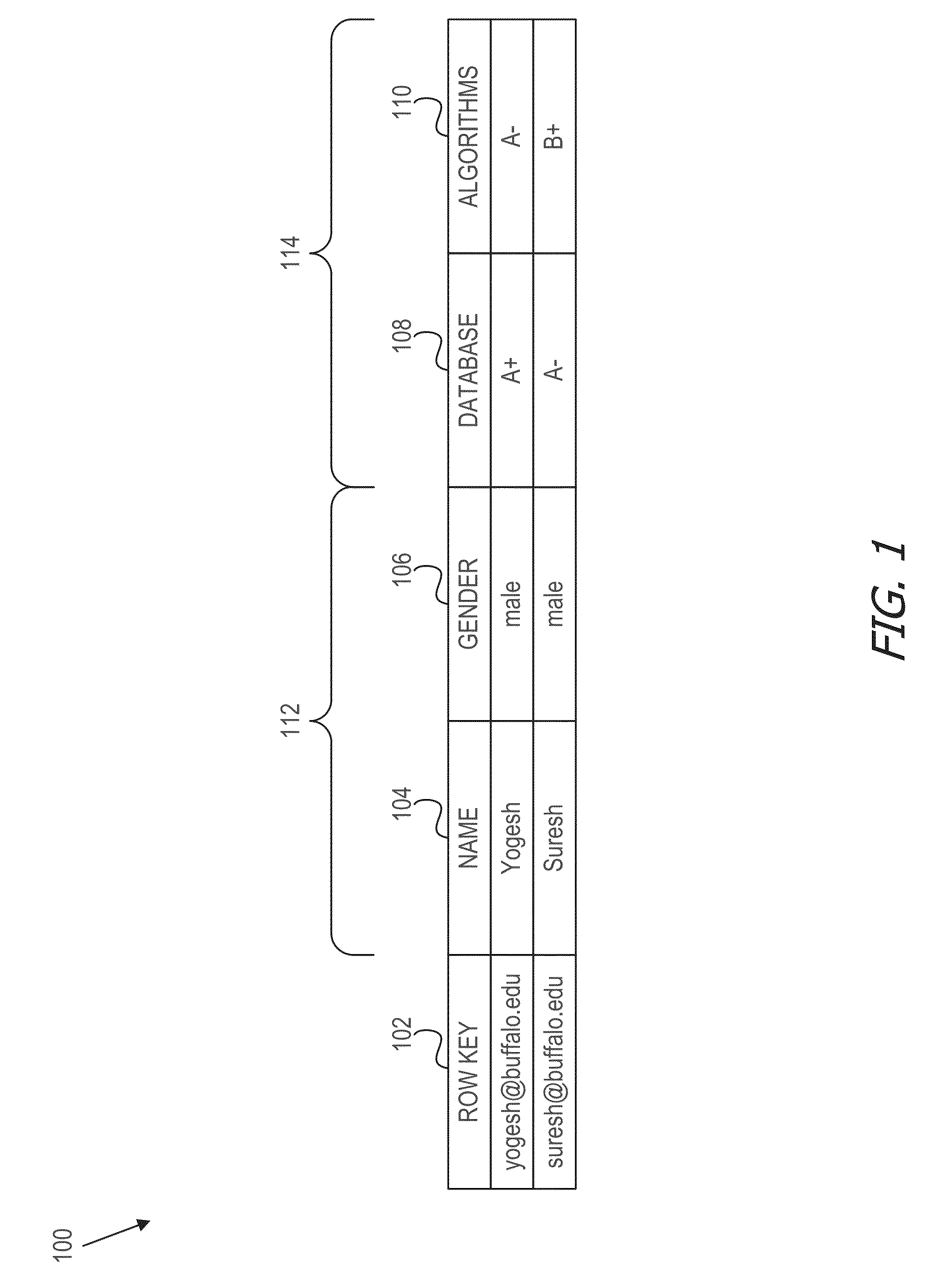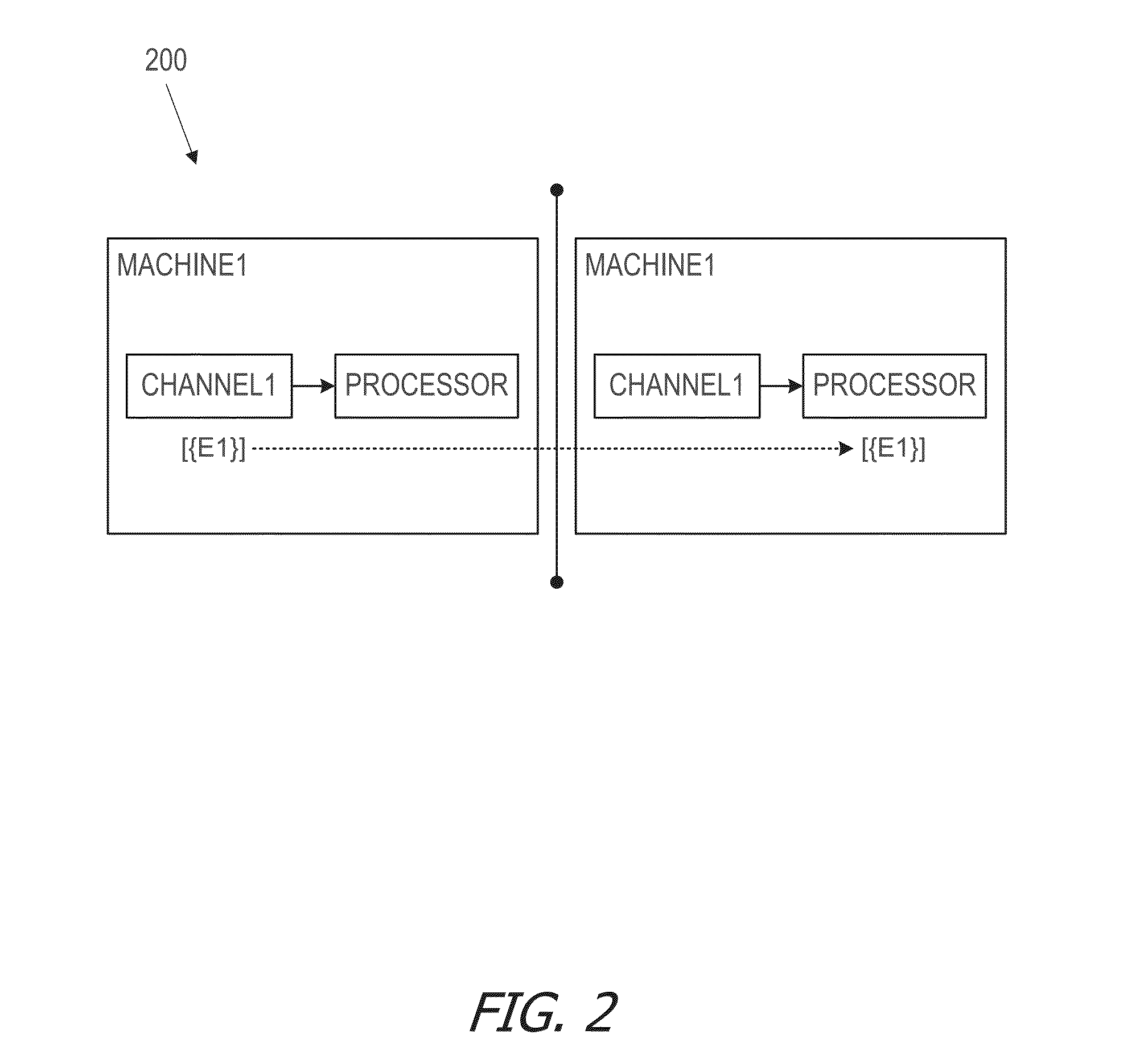Enriching events with dynamically typed big data for event processing
a big data and event technology, applied in the field of enriching events with dynamically typed big data for event processing, can solve the problem that the traditional database model is not well suited to a growing number of modern applications
- Summary
- Abstract
- Description
- Claims
- Application Information
AI Technical Summary
Benefits of technology
Problems solved by technology
Method used
Image
Examples
example event processing networks
[0082]FIG. 2 is a block diagram that illustrates an example of a simple event processing network 200, according to some embodiments. In FIG. 2, event processing network 200 can be defined using the syntax: local-broadcast(channel1, machine1, event processing network1, {(channel1, machine1, {e1})})={(processor, machine1, {e1})}.
[0083]Discussed below are some clustered cases, where R={machine1, machine2, machine3}. FIG. 3 is a block diagram that illustrates an example of a broadcast event processing network 300, according to some embodiments. In FIG. 3, event processing network 300 can be defined using the syntax: clustered-broadcast(channel1, machine1, event processing network1, {(channel1, machine1, {e1})})={(processor, machine1, {e1}), (processor, machine2, {e1}), (processor, machine3, {e1})}. In this case, the same event e1 is distributed to all of the computing resources machine1, machine2, and machine3.
[0084]FIG. 4 is a block diagram that illustrates an example of a load-balanci...
PUM
 Login to View More
Login to View More Abstract
Description
Claims
Application Information
 Login to View More
Login to View More - R&D
- Intellectual Property
- Life Sciences
- Materials
- Tech Scout
- Unparalleled Data Quality
- Higher Quality Content
- 60% Fewer Hallucinations
Browse by: Latest US Patents, China's latest patents, Technical Efficacy Thesaurus, Application Domain, Technology Topic, Popular Technical Reports.
© 2025 PatSnap. All rights reserved.Legal|Privacy policy|Modern Slavery Act Transparency Statement|Sitemap|About US| Contact US: help@patsnap.com



